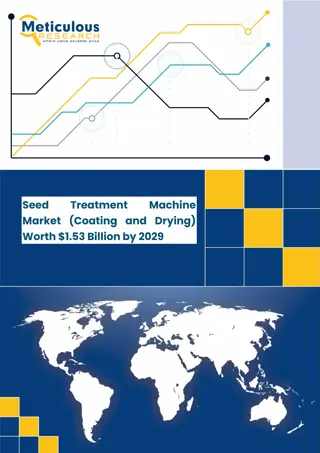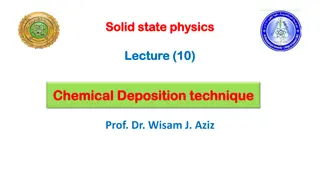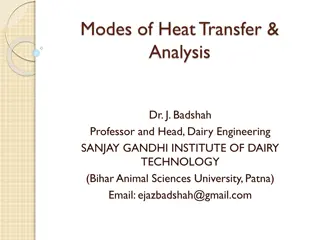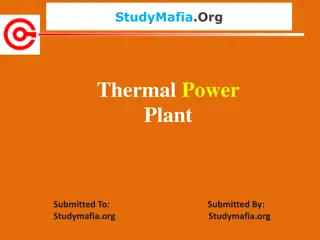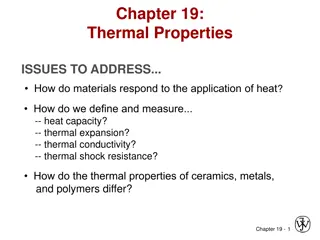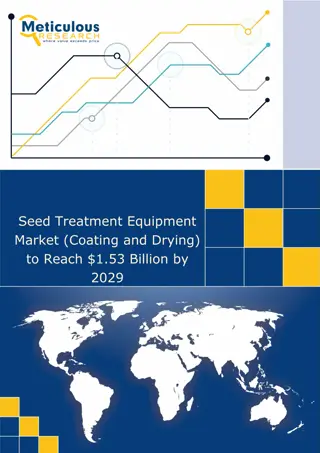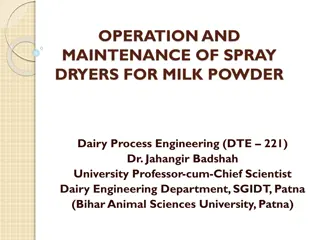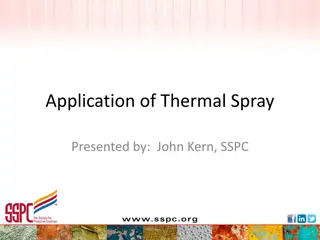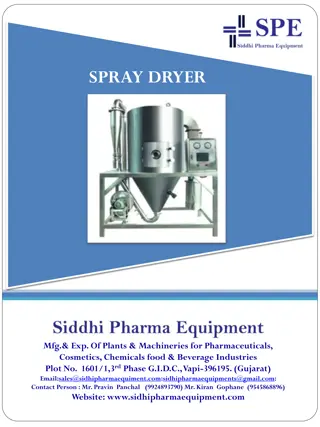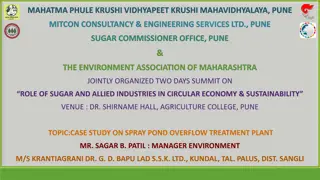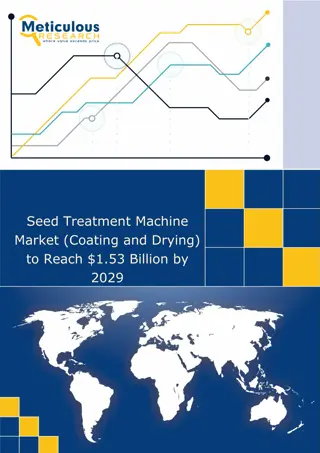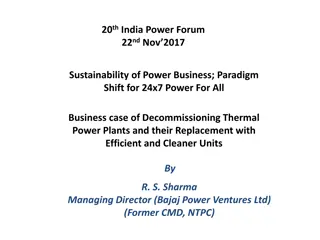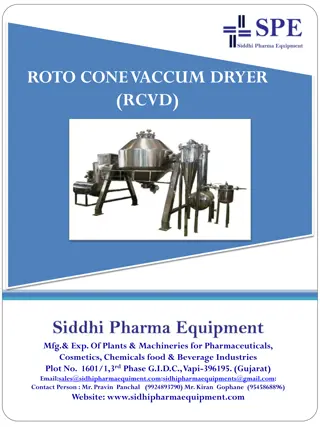Thermal Efficiency and Controls in Spray Dryers
Understanding the thermal efficiency and control factors in spray dryers is essential for optimizing drying operations in various industries. Factors such as inlet air temperature, heat exchanger efficiency, and solids content influence the overall efficiency of the drying process. Higher efficiency can be achieved by minimizing heat losses, optimizing air heating, and controlling moisture content in the product. These insights lead to improved energy utilization and product quality in spray drying applications.
Download Presentation

Please find below an Image/Link to download the presentation.
The content on the website is provided AS IS for your information and personal use only. It may not be sold, licensed, or shared on other websites without obtaining consent from the author.If you encounter any issues during the download, it is possible that the publisher has removed the file from their server.
You are allowed to download the files provided on this website for personal or commercial use, subject to the condition that they are used lawfully. All files are the property of their respective owners.
The content on the website is provided AS IS for your information and personal use only. It may not be sold, licensed, or shared on other websites without obtaining consent from the author.
E N D
Presentation Transcript
Thermal Efficiency and Controls in Spray Dryers Dr. J. Badshah University Professor cum - Chief Scientist Dairy Engineering Department Sanjay Gandhi Institute of Dairy Technology, Jagdeopath, Patna (Bihar Animal Sciences University, Patna)
Drying Efficiency The thermal efficiency of operation of dryer is the ratio of theoretical heat required to the actual heat used in heating the air in spray dryer. If R = Radiation loss, % of total temperature drop in dryer, T0 = Atmospheric air temperature, C T1 = Temperatur to which air is heated, C T2 = Temperature of air leaving the spray dryer, C Thermal Efficiency = [(1 R/100) (T1 - T2 )]/(T1 - T0) The overall thermal efficiency of a spray dryer is 50 60 per cent. The heat requirement to evaporate 1 kg water in spray dryer are 1200, 980 and 850 Kcal/kg in sinle, double and three stage dryers respectively.
Factors Affecting the thermal efficiency of spray dryer Increasing the feed temperature reduces the viscosity and also reduces the heat required to produce a unit weight of dried product. Higher consumption i.e. Kcal per kg of powder produced. Inlet air temperature can be used to reduce fuel Higher requirement to produce a unit weight of product of constant residual moisture content from a constant solids feed. It can be achieved with either increasing inlet air temperature or decreasing outlet air temperature. the temperature difference means lower the heat Low Outlet Air temperature leads to higher moisture in the product as it leaves the dryer and hence two stage drying is required, which improves the quality and efficiency but with additional fixed cost.
Factors Affecting the thermal efficiency of spray dryer High efficiency of heat exchanger for air heating also improves thermal efficiency. The drying capacity of the dryer is increased by 5 %, when the concentrate is fed to the atomiser at 70 C instead of 50 C. The average size of atomized particle is reduced and lowers the outlet air temperature and improves the solubility of powder. Use of Outgoing Exhaust air or effect of recycling of exhaust air (10-50%) to preheat supply air to dryer recovers some of the waste heat of exhaust air but it should be partial to avoid the increase of humidity of inlet air. Reducing heat losses and air leakage from dryer body also improves efficiency.
Factors Affecting the thermal efficiency of spray dryer Heat input is proportional to the evaporation rate. Higher the solids content means low evaporation rate and thereby lower heat input. Increase in solids content from 10 to 25 % for a given production rate results in reduction of 66.6 % heat input. Skim milk and whole milk are concentrated to 48-50 % solids and whey to 55-60 % solids to increase efficiency. Beyond this would have adverse effect on quality of powder. The two stage drying has higher thermal efficiency with the principle of reducing the outlet air temperature with the moisture content of powder as 6-7 % leaving the main dryer and from 3-4 % when leaving the secondary dryer. The secondary dryer uses the heated fresh room air with higher drying capacity and less air requirement comparatively. Thus unit is operated with less air than if all the drying is done in the main drying chamber.
Controls in spray Dryers Objective is to produce a powder of high uniform quality i.e. desired moisture content, high solubility, bulk density and minimum free fat in whole milk powder without discolouration or Selection of proper atomizer controls the b.d. and free fat in powder along with feed conditions. Nozzle powder has less occluded air and higher b.d. than powder from rotating atomizer. optimum undue loss of nutrients. Whole milk powder produced from nozzle atomizer contains less free fat than from rotary atomizer due to higher homogenizing effect in high pressure pump and nozzle.
Controls in spray Dryers Constant product input with control of Inlet air temperature Constant product input during which outlet air temperature is automatically maintained by inlet air temperature variation Variable Feed input in which outlet air temperature is constant for a constant air inlet temperature Automatic controls in spray dryers Control of moisture and quality with multistage drying with respect to maintaining constant outlet air temperature by feed control automatically
Factors Affecting the Capacity and Operation of Drum Dryer The drying capacity varie from 5 to 50 kg of dry product per m2 and is affected by following factors: Milk Feed temperature, concentration (desirable 18-25 % TS) and level of milk Avoid uneven and broken sheet of drying materials on the drum Drum gap in double drum dryer Drum speed, Roller alignment Steam pressure and temperature not too high and drum speed not too low Condensate removal High moisture of the product may be due to low temperature, thick film, high solid and high rpm of the drum.






